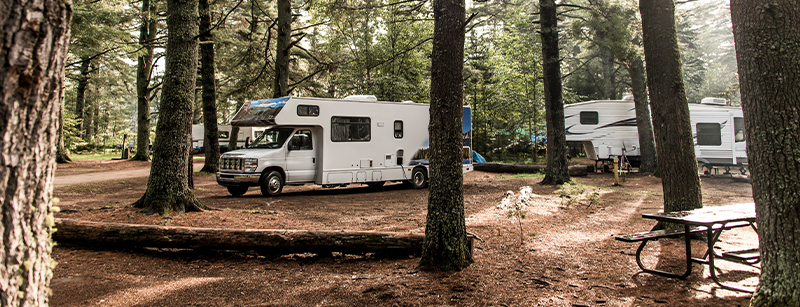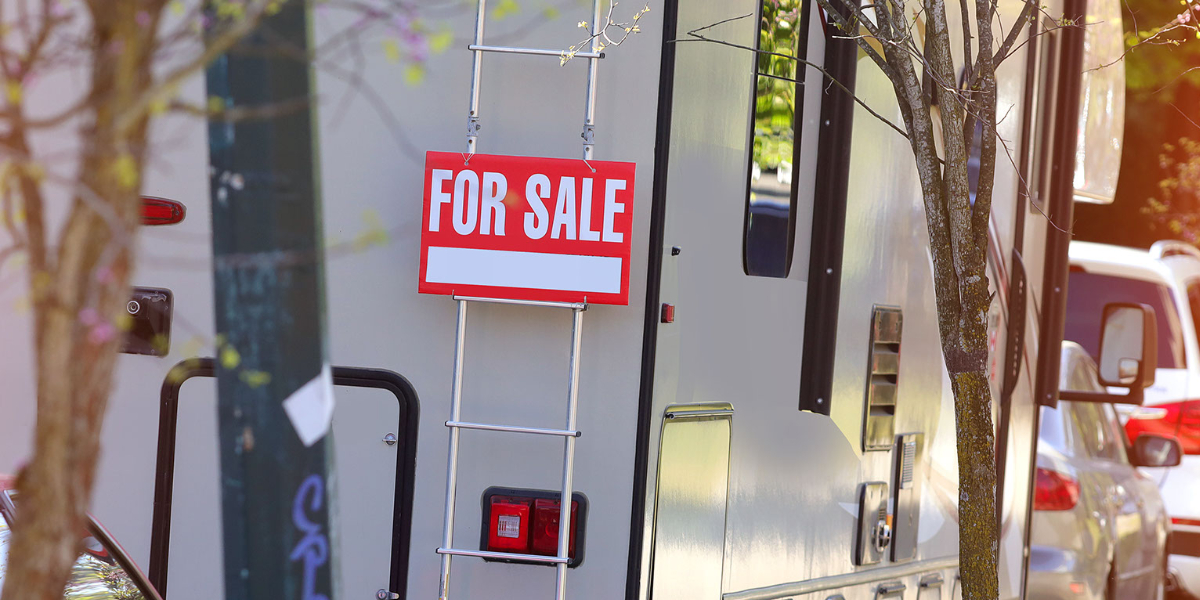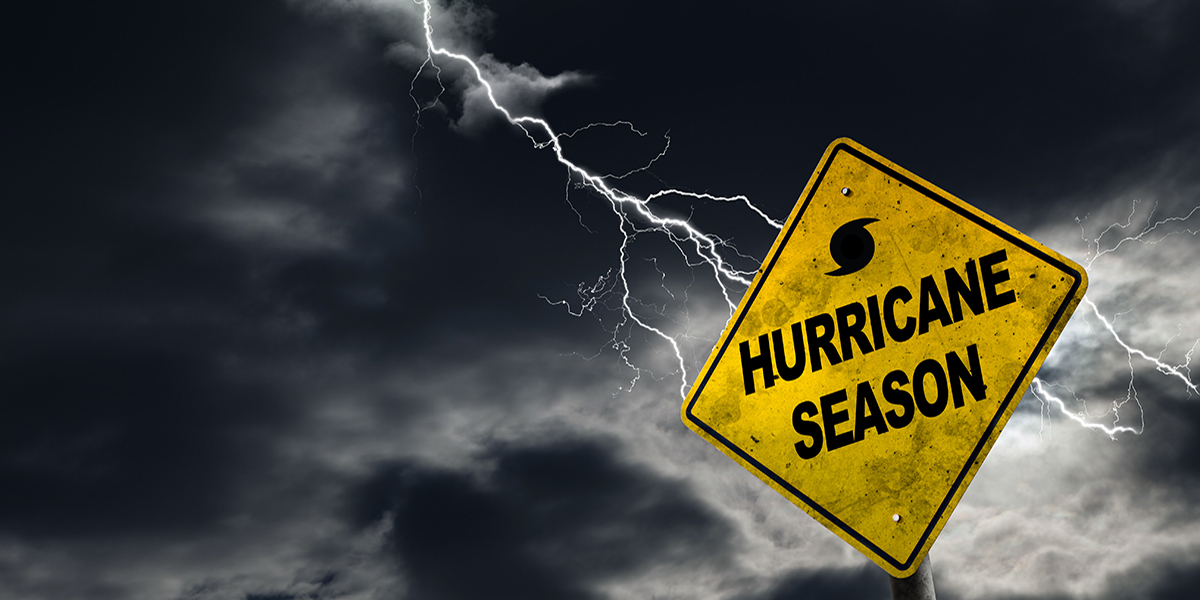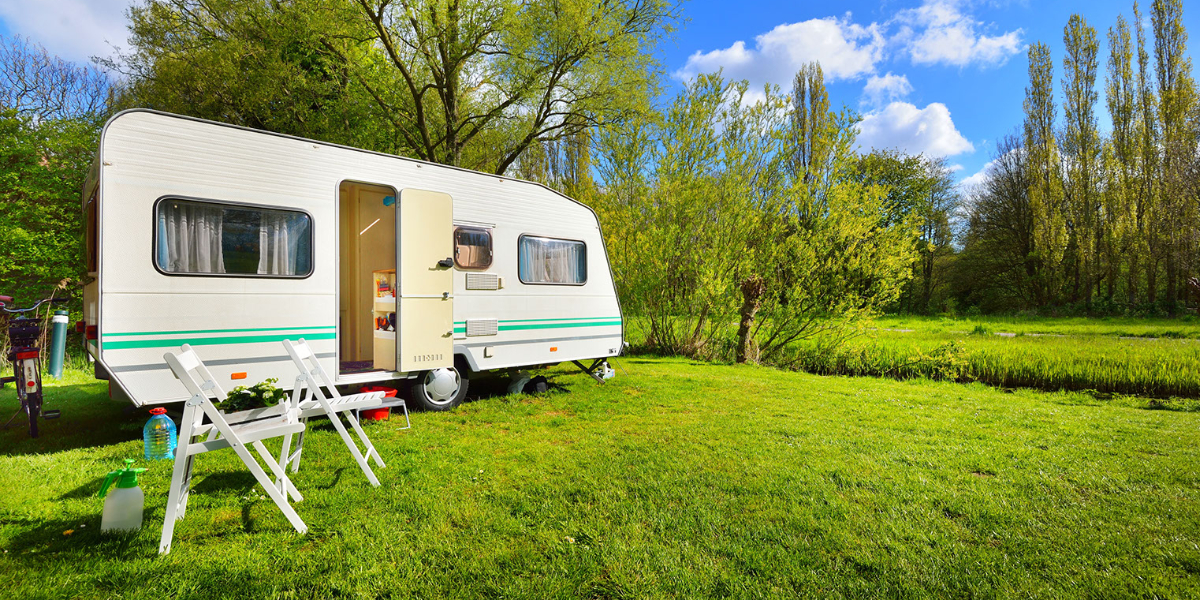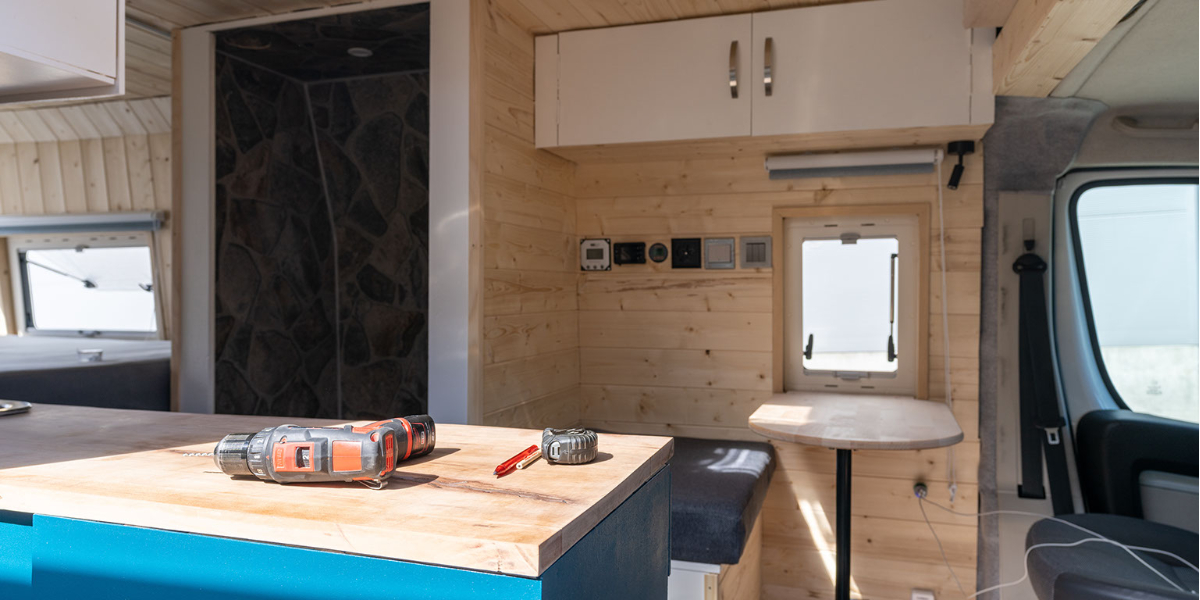You’re off on an adventure, ready to explore the country in your RV. When it comes time to settle in, you can either stay at a designated RV park and campsite, or boondock your camper. If you’re new to camping in an RV, be sure you learn the written and unwritten rules. RV Trader has seven tips for RV park and campground etiquette that you should know.
1. Follow Posted Campground Rules
Before you head out to the RV park or campground, visit their website or call to find out what the official rules and guidelines are. These rules apply not just to RVs but to all visitors, to ensure a safe and enjoyable camping experience. Campground guidelines include everything from where to park and quiet hours to rules for utility hookups, pets, campfires, and more. Following these regulations is the easiest way to be a good neighbor to your fellow campers.
2. Be Aware of Your Space
Once you park and set up your campsite, you may be tempted to sprawl out and unload all of your toys and supplies, including sports equipment, outdoor games, and grills, onto the lawn. Be considerate of your RV neighbors and try not to encroach on someone else’s campsite. Campers should respect the shared spaces and not clutter the area with personal items. Make sure you aren’t blocking any walkways or roads with your personal items or camper. If your RV has slide-outs, make sure you’re aware of how far they extend.
3. Respect Other Campers’ Spaces
While camping does encourage a sense of community, be considerate of other travelers’ privacy. While it might be tempting to take a shortcut through someone else’s campsite, stick to the main roads and public paths. It’s always best to respect others’ campsites as if it was their private property.
4. Be Responsible for Your Pets
One of the benefits of RVing is being able to travel with your pet. While staying on a campsite, be sure to keep track of your furry friends. Unless they’re in a designated area, dogs should remain on a leash and should not be roaming around the RV park or campground unsupervised. Avoid leaving your pet alone in the RV if they get noisy when unattended. It’s understandable when a dog barks, but no one wants to hear it constantly, especially at night. And, just as you’d take your dog for a walk around your neighborhood, remember to clean up after your pet and dispose of their waste properly.
5. Keep the Noise Down After Hours
As we mentioned above, most campgrounds will have posted quiet hours, often from 10 p.m. to 7 a.m. These hours don’t mean you have to be as quiet as a mouse, but you should be respectful of your neighboring campers. Avoid running generators, blasting music, or having excessively loud conversations. Camping offers a chance to listen to the best soundtrack—the unpolluted sounds of nature.
6. Remember to Turn Your Lights Off
Similar to noise, the lights outside your RV can be distracting to other campers at night who are trying to sleep or stargaze. Turning off your camper’s exterior lights when you go in for the evening is common courtesy. If you would like some light for safety, consider packing a low-wattage or amber-colored lamp that is less disruptive.
7. Maintain a Clean Campsite
Both during your stay and as you prepare to leave, be vigilant of any trash or mess you make. Just as you wouldn’t leave trash in your yard at home, keep your campsite clean and free of litter. A neat site is not just important for you and your fellow campers but also the land you’re occupying. When you leave a campsite, there should be no trace that you were ever there.
If you stay at a full-hookup campsite, make sure your sewer and water hoses are in good working condition and connected properly. Dispose of gray or black water at a dump station only. The last thing anyone wants is an unsanitary and unpleasant-smelling campsite.
RV camping is a great way to spend time with family and friends outdoors. However, you surely won’t be the only people staying on the campgrounds. Keep these RV camping etiquette tips handy next time you hit the road, so that you’re sure to be a courteous neighbor. If you’re seeking more freedom from standard campgrounds, consider boondocking. We’ve previously covered boondocking etiquette to help you out.
If you’re searching for an RV, start with the for-sale units available on our nationwide marketplace at RVTrader.com.
